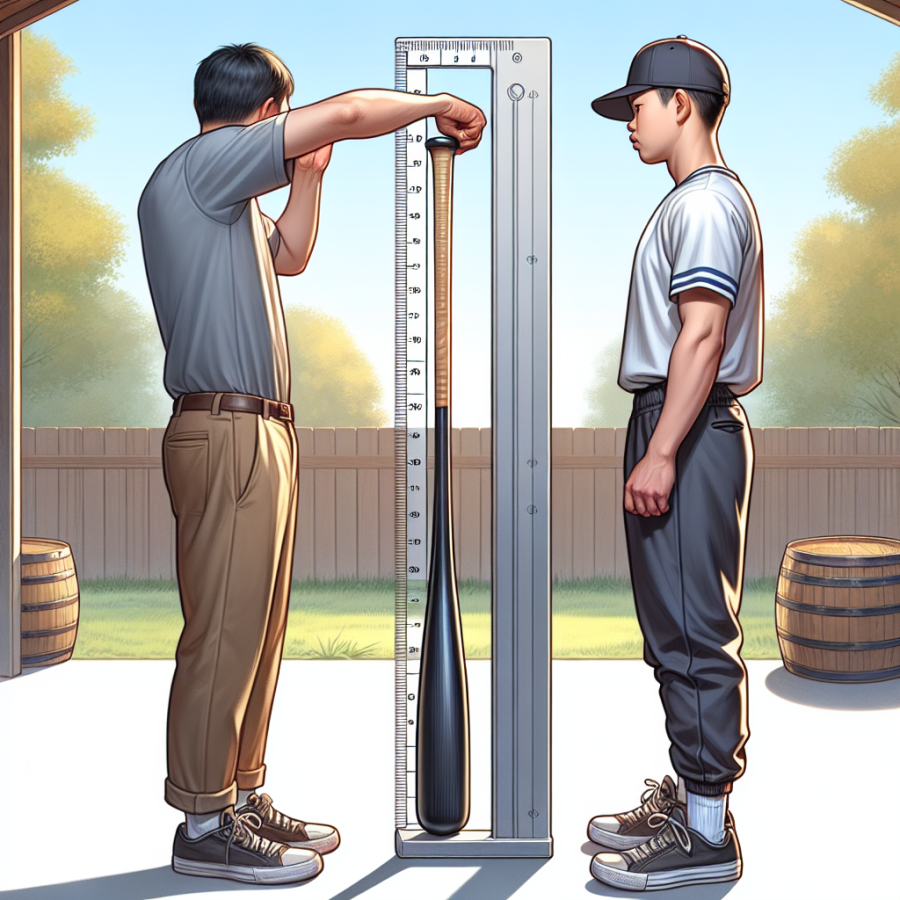Grip and Comfort: Fine-Tuning Your Selection for an Ideal Swing
When choosing the ideal baseball bat size, one of the critical factors to consider is the grip and comfort it provides. Ensuring that the bat feels right in your hands is paramount for confidence at the plate and optimizes your chance for a successful swing.
The grip is the part of the bat where your hands make contact and can significantly influence your control and bat speed. Grips usually feature a cushioned tape or synthetic leather, which not only affect how the bat feels but also how well you can hold onto it. When selecting a bat, try out different grip materials and thicknesses to see what feels best for you. Thicker grips can reduce vibration and are gentler on the hands, while thinner ones may offer a more direct feel and better feedback upon contact.
Comfort entails more than just the physical feel; it incorporates the mental assurance that the bat is an extension of your body. For maximum comfort, the bat should feel balanced when you hold it. Some players prefer a top-heavy bat (end-loaded) because it can potentially generate more power, while others prefer a well-balanced or lighter bat (balanced) for better speed and control. This balance could influence the ease with which you can swing the bat through the strike zone.
An often overlooked aspect of grip and comfort is the size of the bat's handle and knob. The handle's diameter can affect your grip and wrist action. Younger players or those with smaller hands may benefit from a smaller handle that allows for easier handling and quicker wrist movements. The knob at the end of the handle ensures that the bat doesn't slip from your hands and provides a counterweight to the barrel, influencing the swing's feel.
To fine-tune your selection for optimal grip and comfort, it's advisable to try various bats during practice. Pay attention to how the bat's weight distribution affects your swing and how the grip feels during multiple hitting sessions. Adjustments can be made with grip tape to customize the handling to your preference.
Remember, a bat that provides the perfect combination of grip and comfort for one player may not be suitable for another. It's personal preference, and spending the time to get it right will pay dividends every time you step up to the plate.
Read also:
Unmasking Bones: The Man Who Transformed Golf's Landscape
When it comes to selecting the perfect baseball bat size, there are several critical components that should be taken into account to ensure the best choice for the player. The process involves understanding the importance of length, weight, the drop weight, material, and league requirements. Let's dig deeper into these sections to help players or parents make an informed decision.
Length is the first dimension to consider when choosing a baseball bat. It is vital to find the right length for the player's height and arm span. A bat that is too long will be difficult to swing, while one that is too short won’t allow the player to cover the whole strike zone. One common method to check for the appropriate length is to stand the bat up next to the player. The top should reach no higher than the hip, but also not be too short as to go below the waist. You can also hold the bat out to the side with your arm extended; if it's an appropriate length, you should be able to do this comfortably for about 20-30 seconds without the bat dropping.
Weight plays a significant role in bat performance. Generally, heavier bats provide more power while lighter bats enable quicker swinging. However, the weight must be manageable for the player. If the bat is too heavy, it can slow down a swing, decrease bat control, and ultimately hinder performance. To test if the bat weighs right, have the player hold the bat out with one hand (preferably their dominant hand) extended for 20-30 seconds. If they can do this without struggling or shaking, the bat might be well-suited to their strength.
Drop weight is the difference between the length of the bat (in inches) and the weight of the bat (in ounces), and it's one of the most crucial factors to consider. This number helps players understand how heavy or light a bat is relative to its length. Youth league bats often have a drop between -7 to -13, with higher drop weights indicating lighter bats. While lighter bats are easier to swing, they can sometimes lack the power that a heavier, smaller drop weight bat would have.
Material can significantly affect a bat's feel and performance. Aluminum bats, for example, are durable and usually have a lighter feel, making them easy to swing. They are often recommended for younger players due to their lighter weight and larger sweet spots. Composite bats can also be a good choice as they often offer a larger sweet spot and reduce vibration on mis-hits.
Understanding Bat Length and Weight: Key Factors in Making Your Choice
When choosing a baseball bat, understanding the relationship between bat length and weight is essential for any player, beginner or expert alike. These two factors greatly influence your batting performance, and finding the right balance is key to making your perfect choice.
The length of a bat is measured from the knob at the bottom of the handle to the end of the barrel. The length of a bat impacts your reach and ability to hit balls across the strike zone. A longer bat will enable you to connect with pitches that are farther away from your body, but it also tends to be heavier, which can slow down your swing speed. Younger or smaller players typically benefit from shorter bats that allow for better control and quicker swings. Conversely, taller players with more strength can handle longer bats that may provide greater plate coverage and power.
When discussing weight, two terms are often mentioned: 'weight' itself and 'drop weight'. The weight of a bat is simply how much it weighs, typically measured in ounces. The drop weight is the difference between the length of the bat (in inches) and its weight (in ounces). For instance, a 30-inch bat that weighs 20 ounces has a drop weight of -10. This concept is important because league rules often have regulations on drop weight to ensure player safety and competitive balance.
Choosing the correct weight is crucial for maintaining control over the bat. A bat that is too heavy will be difficult to swing and could reduce your bat speed, while a bat that is too light may not provide enough power or could cause you to swing too early. It's all about finding that sweet spot where you have enough mass to drive the ball effectively without compromising your swing mechanics.
To find the optimal length and weight for a bat, players should consider their age, height, weight, and skill level. Younger players might need a lighter and shorter bat to maintain control and develop proper swing techniques. As players grow and become stronger, they can transition to heavier and longer bats that accommodate their increased power and extended reach.
During the selection process, it's advisable to test several bats to find the one that feels most comfortable. Practice swinging different lengths and weights to determine which combination feels natural and allows you to swing without strain. Players should also adhere to their league's regulations regarding bat dimensions, as these are designed to ensure safety and fairness in the game.
In summary, the right bat length and weight facilitate a perfect swing, boost confidence at the plate, and enhance overall performance.




